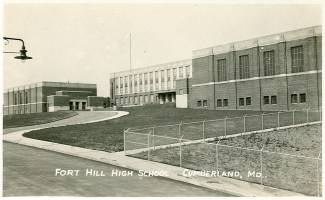Collection Name
About
No Integration Violence In Md.
Schools in five more counties and Baltimore City opened for business yesterday, leaving 13 counties in the state still to begin sessions.
And, as throughout Tuesday, there was no serious threat of violence as many schools admitted Negro children.
Passive resistance was observed in two localities. One the Eastern Shore, about 50 white children were taken out of elementary schools at Easton and Oxford because six Negroes were admitted at Easton and two at Oxford.
About 15 of those children returned during the day, but 35 were still out when the last bell rang.
At Poolesville, where a crowd gathered on opening day Tuesday to jeer the 14 Negro students transferred to the junior-senior high school there, some 275 of the school's 633 students remained out. But there was no scene.
Elsewhere around the state, there were no incidents reported. Dorchester and Wicomico counties, which have limited integration policies, had no applications by Negroes to transfer to white schools.
Baltimore City schools, with a total enrollment of 154,300, were into their third year of integration, and all was quiet.
Used with permission of The Associated Press © 2007 All Rights Reserved.
Printed in the Cumberland News
The illustration is of Fort Hill High School. According to enrollment figures the morning of September 6, 1955, a total of 14 black students in the upper three grades had pre-registered for classes at Fort Hill High School.
Fort Hill High School opened in 1936. In August 1864 Confederate troops under General John McCausland were marching toward Cumberland. Panic struck and over 200 people volunteered to assist Union General Benjamin Kelley in its defense. Union artillery was stationed in an area today known as Nave's Crossroads. The Cumberland militia was stationed on Kelley's right flank, along what is now Williams Road. Cannon and musket fire opened up on 3000 Confederates as they came down the Baltimore Pike. The Confederates retreated. This became the Battle of Folck's Mill.
When the new South Cumberland high school was built, they named it "Fort Hill" because it was on that hill the Union Army had erected a small fort and the volunteer militia had also built their trenches to defend the city.
Postcard from the collection of Albert and Angela Feldstein
